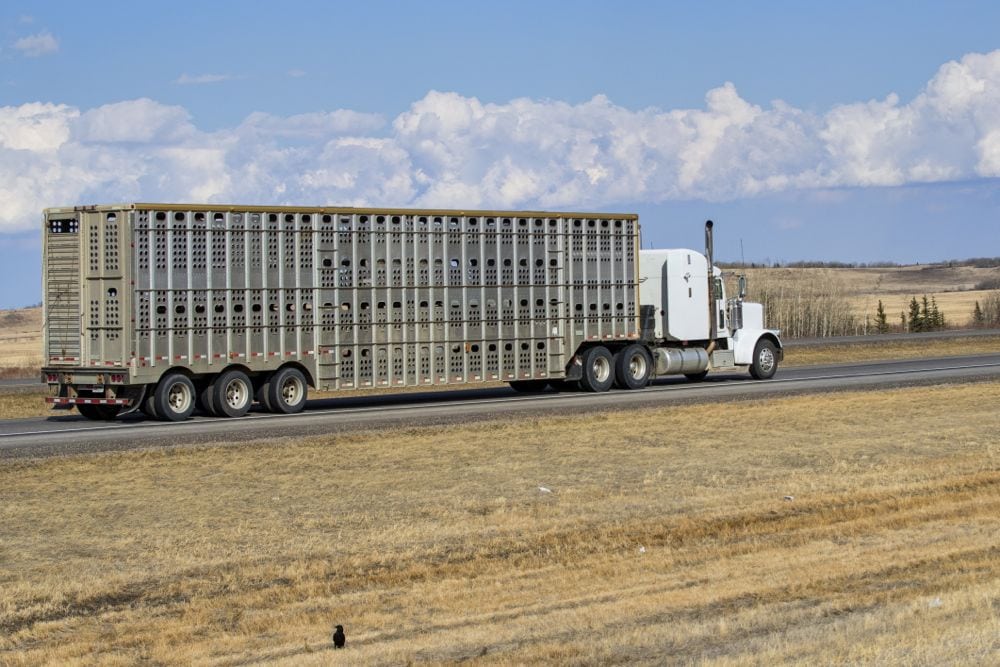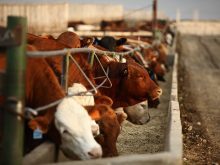CNS Canada — As large volumes of cattle make their way to western Canadian auction marts this fall, buyers are having problems finding truckers to haul them.
Those problems may get worse in the future, as federal regulations for cattle hauling could possibly change.
“I would say it’s worse this year than other years so far, and this is early. We don’t normally run into this problem this quick,” said Rick Wright of Heartland Order Buying Co. at Virden, Man.
The trucker shortage is a seasonal issue for the cattle industry. Over the summer there are fewer sales — and fewer cattle sold. Once fall hits, sales pick up and finding truckers to haul cattle becomes more difficult.
Read Also

Equine herpes case confirmed at Moose Jaw Exhibition Company
The Moose Jaw Exhibition Company has been placed under quarantine, effective Dec. 22, due to a confirmed case of equine herpesvirus-1 (EHV-1) at the grounds.
The trucker shortage isn’t specific to livestock hauling. Industry-wide, the numbers of long-haul truck drivers are dwindling year-over-year in North America. A study from the Canadian Trucking Alliance pegged the average age of a Canadian truck driver at 48 and found that by 2024 the country will be short as many as 48,000 drivers.
“There definitely are problems with the truck driver shortage, that’s universal. Whether it’s hauling agriculture products or livestock or general freight,” said Susan Ewart, executive director for the Saskatchewan Trucking Association in Regina.
The trucking industry is working to try and attract more drivers, according to Ewart. Provincial trucking associations are working with governments to try to change the temporary foreign workers program to bring more immigrants in to fill some of the jobs. They’re also trying to find ways to attract more Canadians into the industry.
“(We’re) trying to change the image of trucking, I mean that’s what we’re talking about at our AGM this year in October. The image of the industry and what we need to do to change that and get people interested in it,” Ewart said.
At Killarney Auction Mart in western Manitoba, Allan Munroe has been hearing from buyers for years about the lack of truck drivers.
“That’s becoming a bigger issue all the time. There’s less guys wanting to become (cattle) haulers all the time. I’m hearing that’s likely to be an issue again (this year),” he said.
This year the issue is being compounded by a larger- and earlier-than-usual fall run. Dry conditions across the Prairies have led to reduced hay cuts and dried-out pastures. Many producers are finding themselves forced to sell cattle earlier than normal.
“At this time of year we start to get into the long-distance hauling into Alberta, into the U.S., into Ontario and Quebec. Manitoba’s basically an exporting province, we finish very few cattle here,” Wright said.
Wright is currently booking trucks two weeks in advance; usually he would only book four or five days ahead. As a buyer he isn’t paid until cattle are delivered in good condition, so any extra days he has to keep them, he has to pay for. In the end, he may find himself having to limit how high he’ll bid at the auction marts.
“Also it’s the efficiency of doing it, of keeping the cattle healthy and moving them, because a lot of these calves in the fall are right off the cows, so they’re fairly fragile. So we need to get wheels underneath them terribly quick,” Wright said.
In order to haul livestock, truck drivers must take special training. According to the Canadian Cattlemen’s Association, under current regulations and livestock hauling training, 99 per cent of the time or more, cattle are reaching destinations injury- and incident-free.
Currently, regulations for shipping livestock in Canada under the Health of Animals Act are under review. The main recommendations in regard to cattle are to reduce the maximum time spent straight-hauling, without unloading animals, to 36 hours from 48.
“I think one of the areas of concern that we do see, and it would have an effect on the entire industry whether it’s trucking or cattle producers themselves that are either shipping or receiving cattle, is the reduction of hours,” said Brady Stadnicki, policy analyst with the Canadian Cattlemen’s Association.
Cattle from Western Canada can face long shipping times when being shipped out east. Under current regulations most of those drives can be made within 48 hours, but if that maximum is reduced it would require more stops.
The cattle industry is concerned there isn’t enough infrastructure to support more stops. The main rest stop for cattle being hauled east is at Thunder Bay, Ont. There is concern the stop isn’t big enough to handle the increased traffic due to reduced hauling times. There’s also concern about the well-being of the animals as the extra unloading could raise the chance of disease transfer between the cattle.
“From a welfare and biosecurity prospective as well, the more times that you stop to unload and reload is where research has shown where the majority of injuries will actually happen,” Stadnicki said.
According to Wright, the possible new regulations could cause even more problems for the truck driver shortage. Reducing the amount of hours cattle are allowed to be shipped would require drivers to haul for longer periods and reduce the amount of loads they would be able to ship.
“If these rules come in, as tight as what the suggestions have been made, it’s even going to enhance that problem. And we’re dealing with a perishable commodity that’s a seasonal commodity,” he said.
The government has gathered feedback on the proposals and it is expected the final recommendations will be released within the next year.
— Ashley Robinson writes for Commodity News Service Canada, a Glacier FarmMedia company specializing in grain and commodity market reporting. Follow her at @AshleyMR1993 on Twitter.















